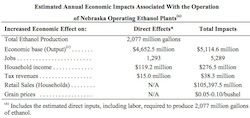 As Minnesota becomes the first in the nation to require all diesel this summer have at least a 10 percent biodiesel blend, the National Biodiesel Board is touting the move… and the green fuel’s benefits.
As Minnesota becomes the first in the nation to require all diesel this summer have at least a 10 percent biodiesel blend, the National Biodiesel Board is touting the move… and the green fuel’s benefits.
“Minnesota has been a pioneer, first demonstrating success with a five percent biodiesel blend. Moving to B10 continues the state’s role as a leader for our energy future, a future that includes diverse options like America’s Advanced Biofuel, biodiesel” said Steven Levy, Chairman for the National Biodiesel Board.
According to the American Lung Association of Minnesota, the state’s current B5 standard reduces emissions equal to removing nearly 35,000 vehicles from the road, which equates to 644 million pounds of atmospheric carbon dioxide. Increasing the blend from B5 to B10 will mean an additional demand of 20 million gallons of biodiesel each year on top of the current usage of 40 million gallons. Minnesota’s current operating production capacity is over 60 million gallons per year. Plants are currently operating in Isanti, Brewster and Albert Lea.
“It is encouraging to see leaders implement consistently strong biofuels policy; this is obviously in sharp contrast to the mixed messages sent from Washington, DC,” said Levy. “Minnesota’s move to B10 shows the impressive potential for renewable energy when policy and entrepreneurship work hand in hand to support real benefits that impact us all. Hopefully those at the national level will see the success in Minnesota and follow up with a strong federal energy policy and strong renewable fuel standard.”
Minnesota was supposed to move to B10 two years ago, but delays to make sure adequate blending infrastructure was in place put it off until now. Starting next year, B10 will be sold from April through September. The rest of the time, a 5 percent blend requirement is in place.












